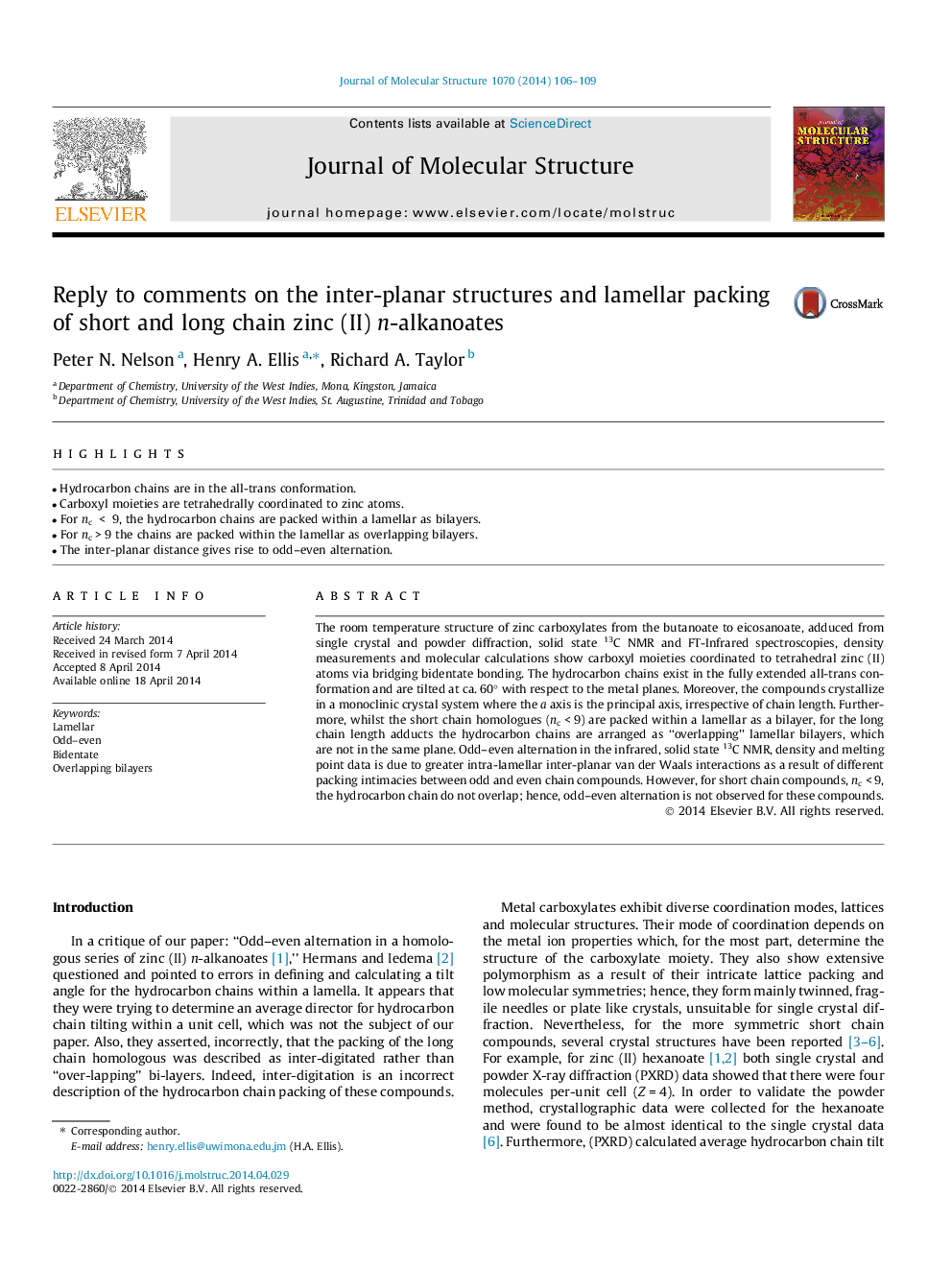| Article ID | Journal | Published Year | Pages | File Type |
|---|---|---|---|---|
| 1405102 | Journal of Molecular Structure | 2014 | 4 Pages |
•Hydrocarbon chains are in the all-trans conformation.•Carboxyl moieties are tetrahedrally coordinated to zinc atoms.•For nc < 9, the hydrocarbon chains are packed within a lamellar as bilayers.•For nc > 9 the chains are packed within the lamellar as overlapping bilayers.•The inter-planar distance gives rise to odd–even alternation.
The room temperature structure of zinc carboxylates from the butanoate to eicosanoate, adduced from single crystal and powder diffraction, solid state 13C NMR and FT-Infrared spectroscopies, density measurements and molecular calculations show carboxyl moieties coordinated to tetrahedral zinc (II) atoms via bridging bidentate bonding. The hydrocarbon chains exist in the fully extended all-trans conformation and are tilted at ca. 60° with respect to the metal planes. Moreover, the compounds crystallize in a monoclinic crystal system where the a axis is the principal axis, irrespective of chain length. Furthermore, whilst the short chain homologues (nc < 9) are packed within a lamellar as a bilayer, for the long chain length adducts the hydrocarbon chains are arranged as “overlapping” lamellar bilayers, which are not in the same plane. Odd–even alternation in the infrared, solid state 13C NMR, density and melting point data is due to greater intra-lamellar inter-planar van der Waals interactions as a result of different packing intimacies between odd and even chain compounds. However, for short chain compounds, nc < 9, the hydrocarbon chain do not overlap; hence, odd–even alternation is not observed for these compounds.
